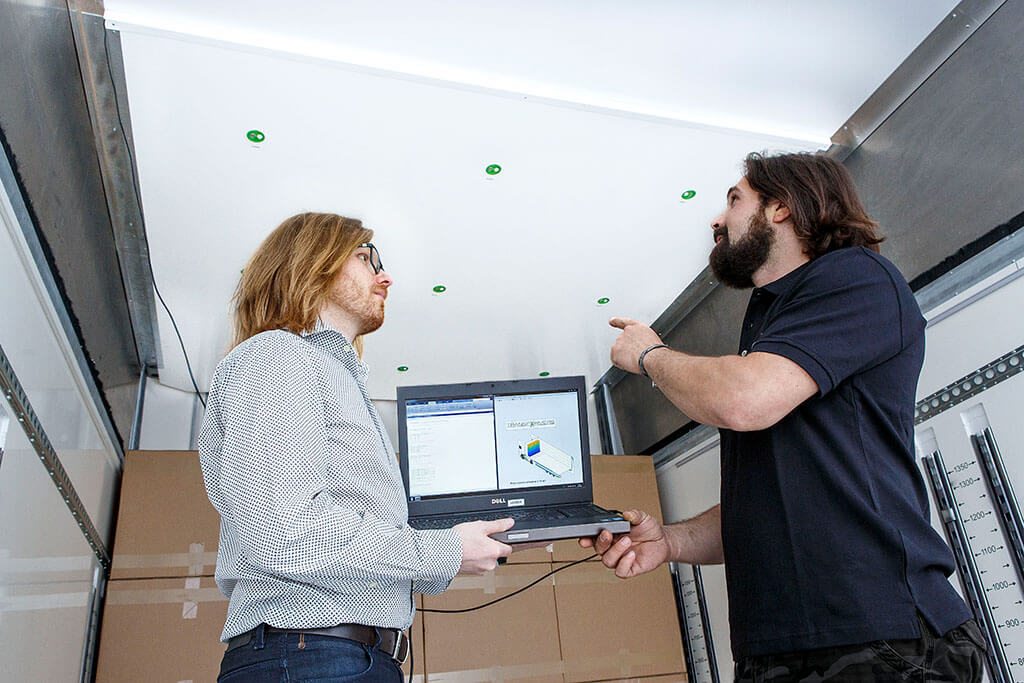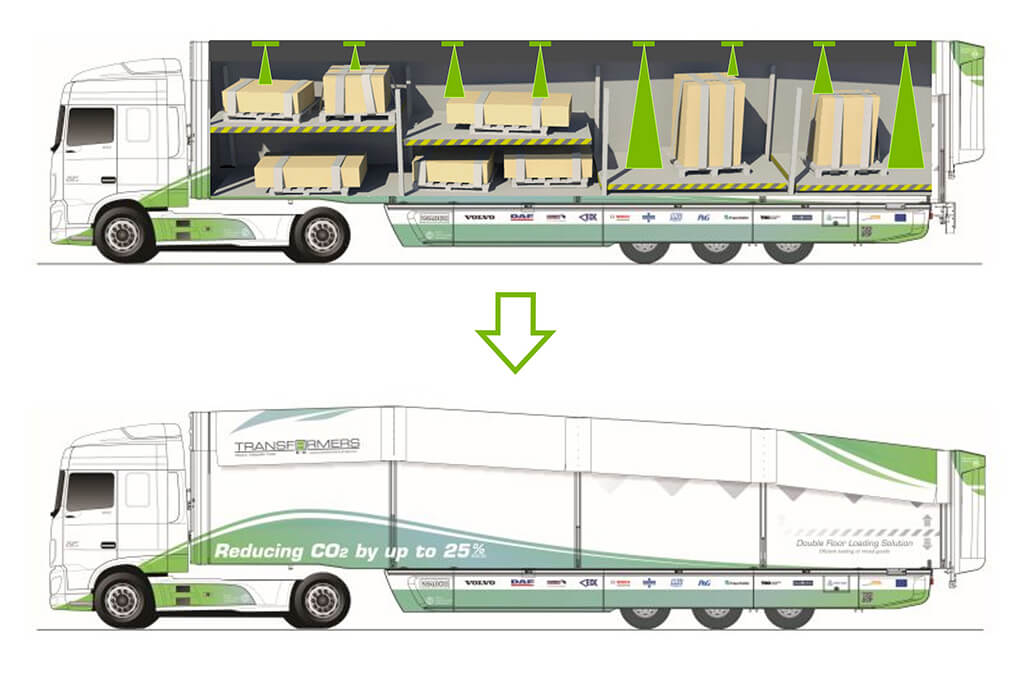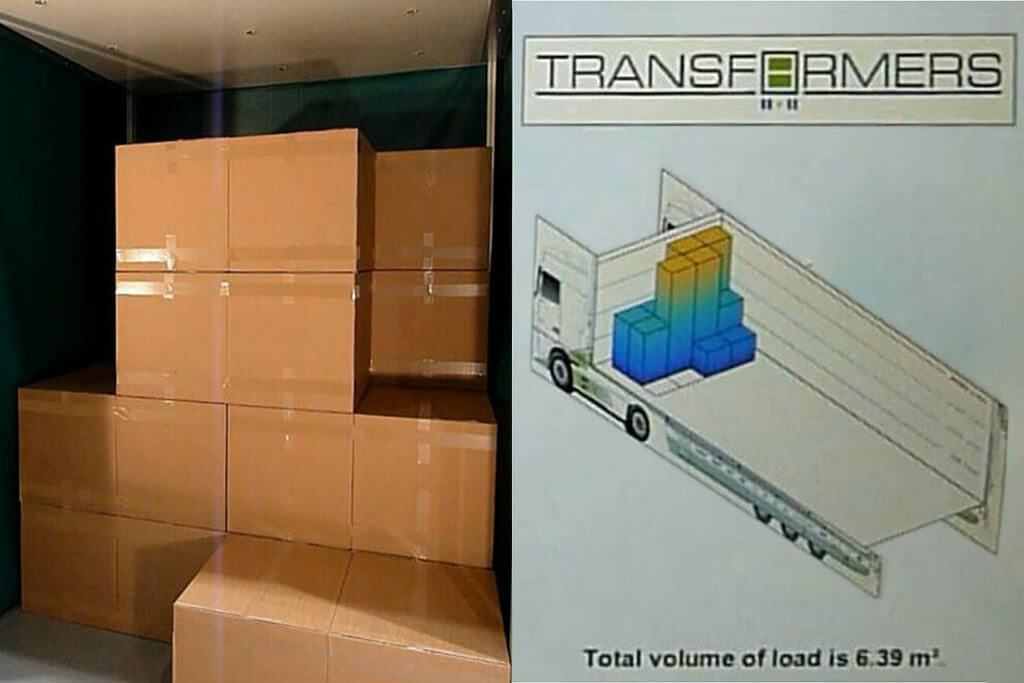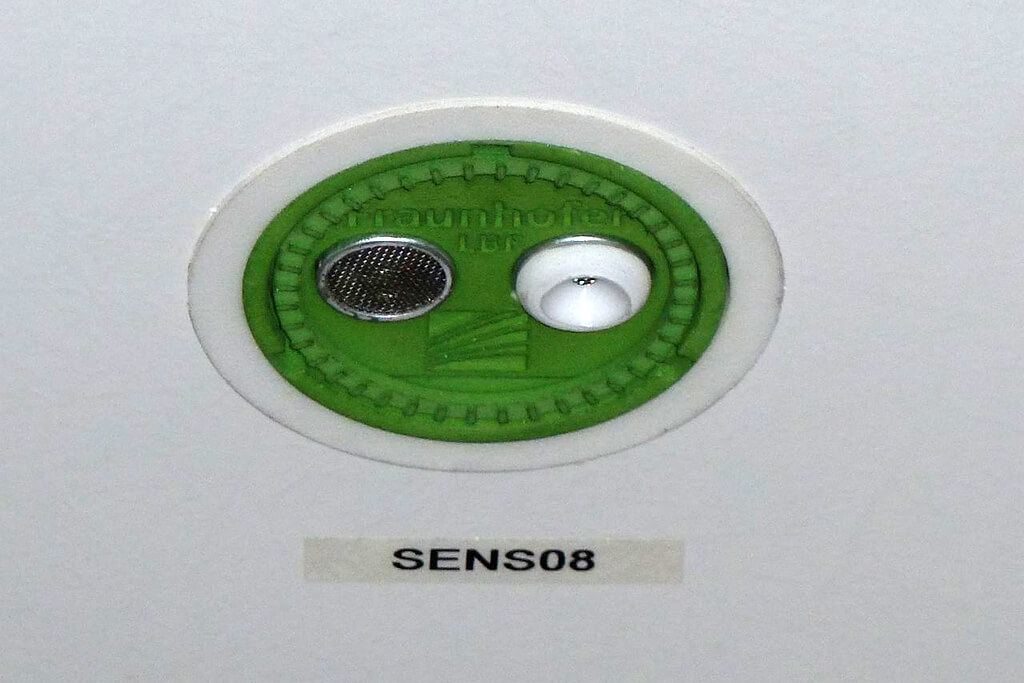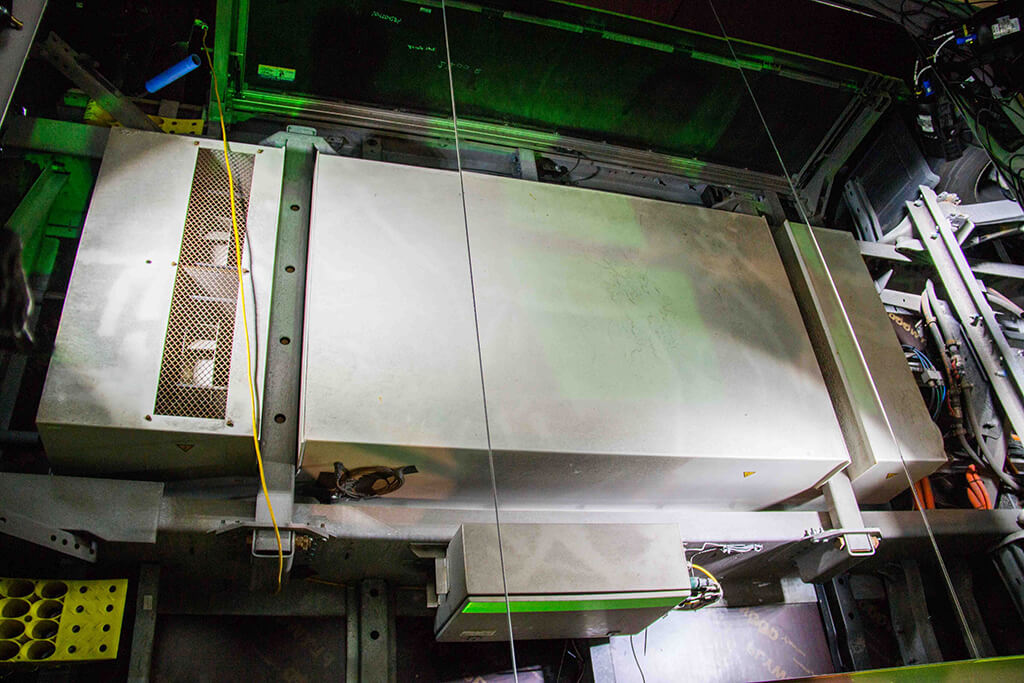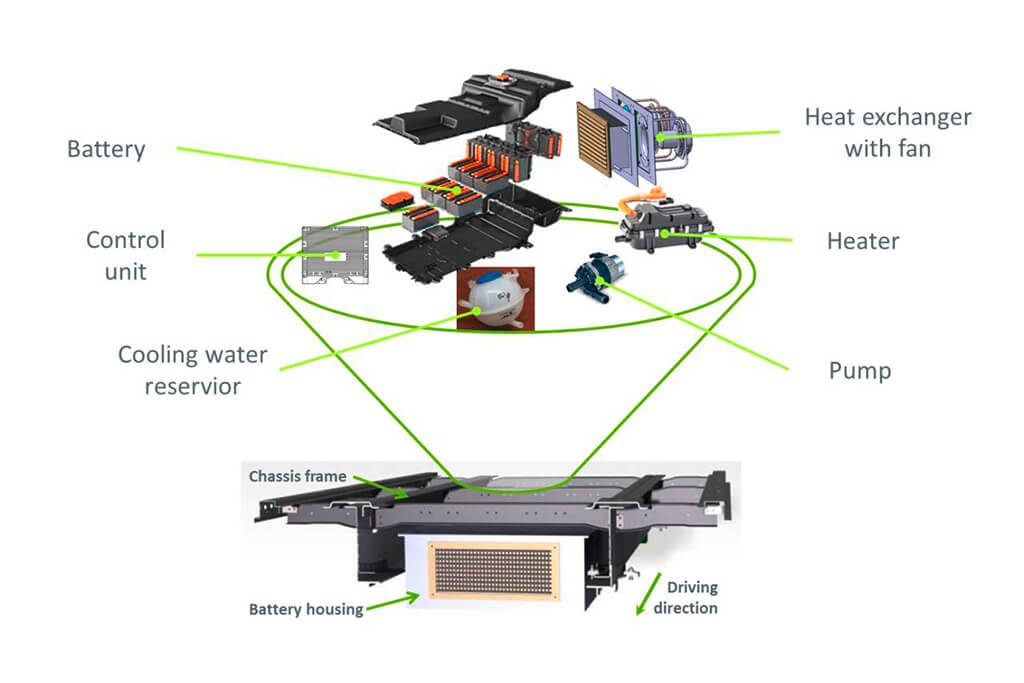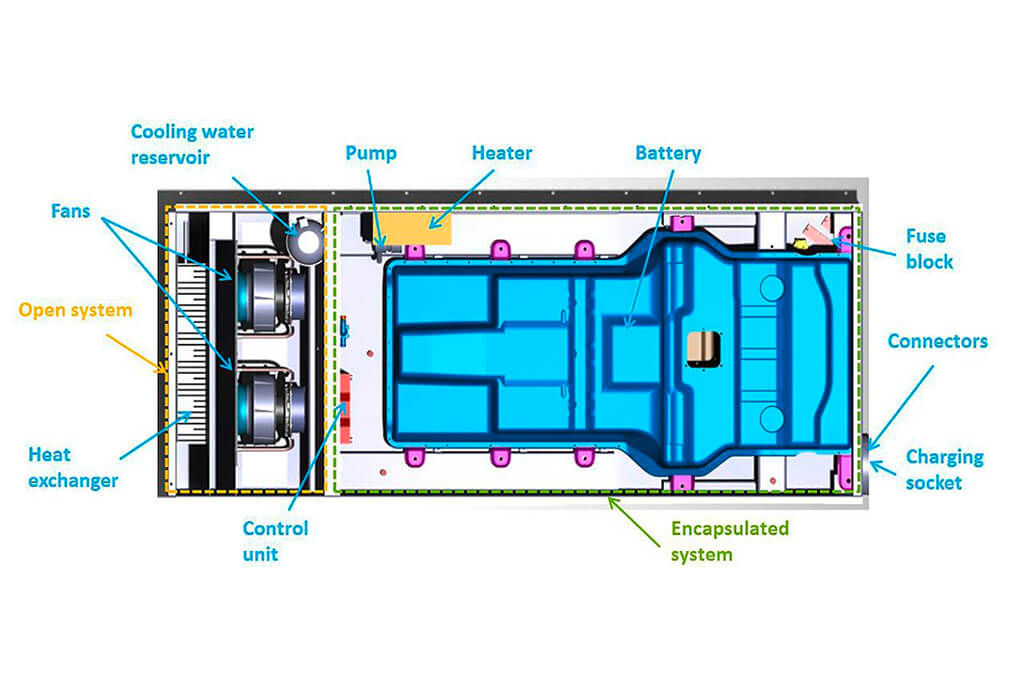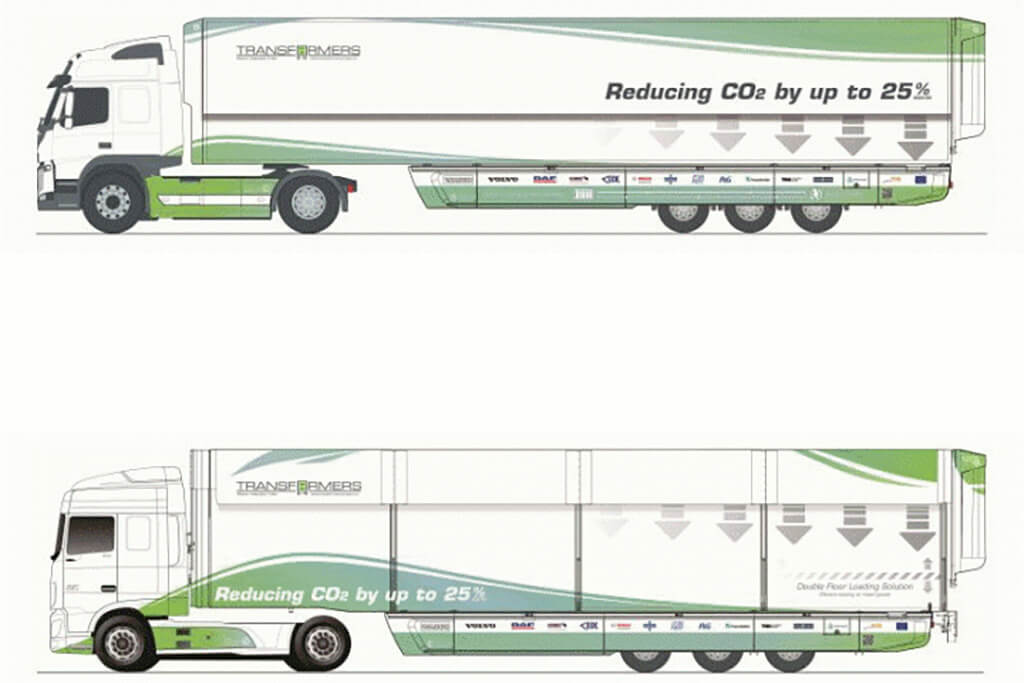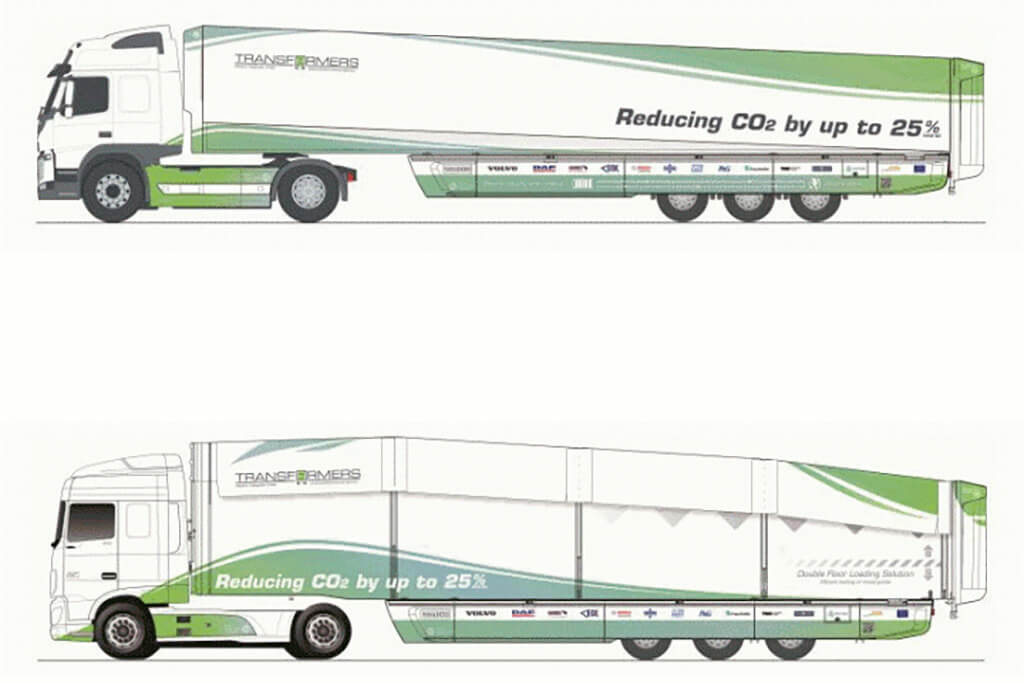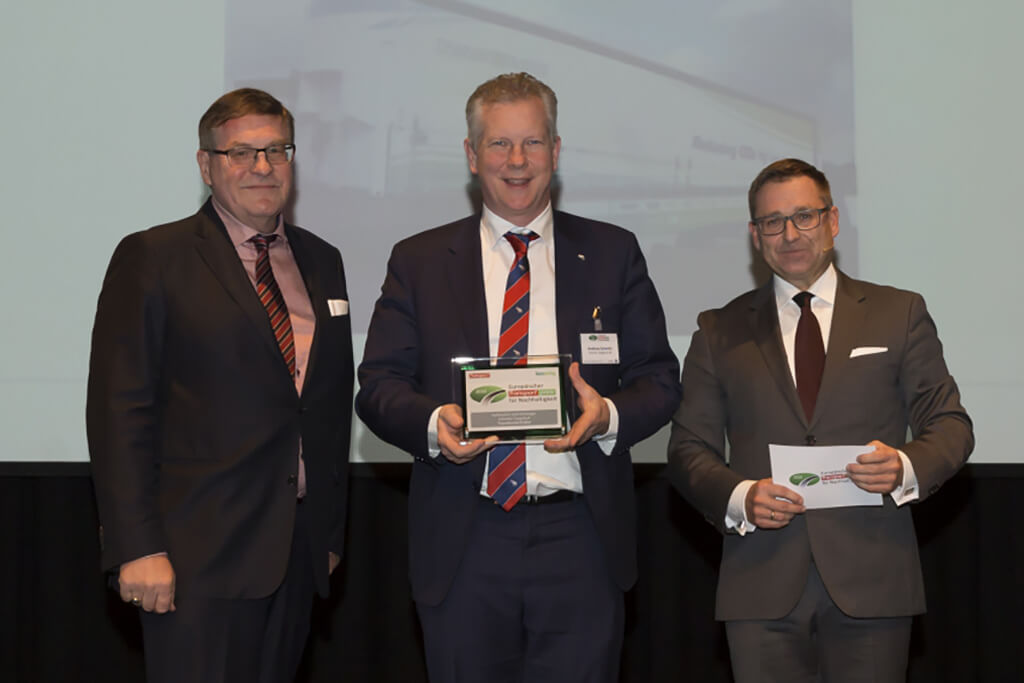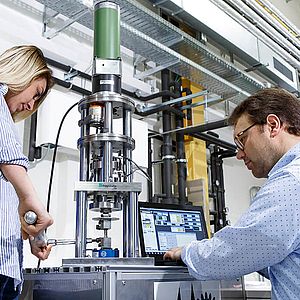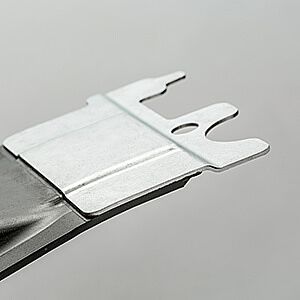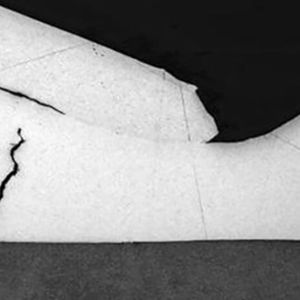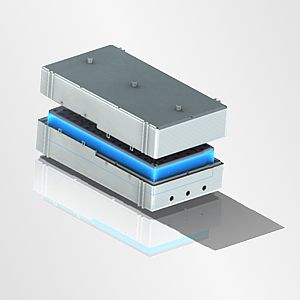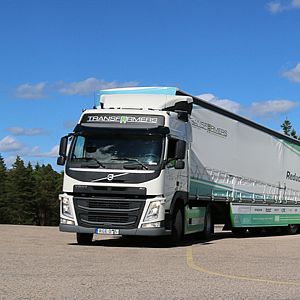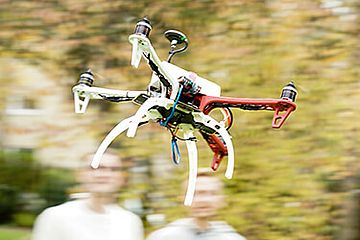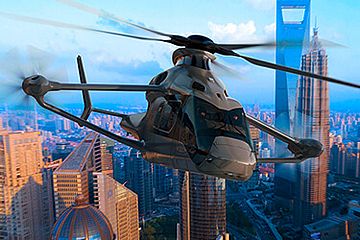TRANSFORMERS: configurable trucks for efficient transport.
Hybrid drive, e-mobility, energy efficiency, CO2 reduction, load volume sensor
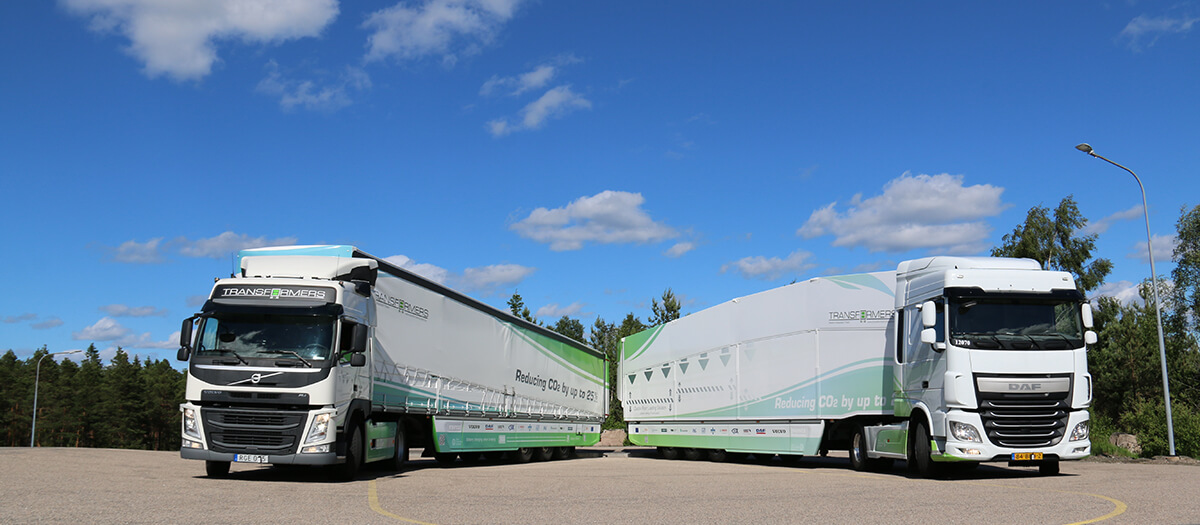
The increasing freight traffic on Europe’s roads requires improvements in truck efficiency. In the EU research project TRANSFORMERS, an international consortium has taken on this task. As part of the collaboration, Fraunhofer LBF developed a sensor system for measuring the load volume and a battery housing to supply an electric auxiliary drive in the trailer.
The TRANSFORMERS trailers (Fig. 1) enable a reduction in the fuel consumption of up to 25%, particularly for palletized goods. This is achieved by the mission-specific adaptation of the structure, an electric auxiliary drive installed in the trailer, an adjustable loading capacity and holistically optimized aerodynamics.
Load-Optimization-Trailer
The Van Eck load-optimization trailer has an electric roof height adjuster, a load volume sensor and a double floor system.
For example, if the maximum permissible mass of the trailer is reached without its volume being fully utilized, the roof can be lowered to reduce the aerodynamic drag. The current utilization is determined in each case by the sensor system developed by LBF for measuring the load height (Fig. 2).
If, however, the maximum permissible mass has not yet been reached, pallets can be loaded one top of one another using the double floor system to fully utilize the maximum load height and thus increase transport efficiency.
Hybrid-on-demand-trailer
The Schmitz Cargobull hybrid-on-demand trailer has a manual roof height adjuster and a hybrid-on-demand drive with energy recovery. Similarly to the load-optimization trailer, the trailer’s roof height can be adjusted to the actual load height to reduce the aerodynamic drag.
As a commonly named hybrid-on-demand system, the electric drive-train installed in the trailer ensures additional power is available at short notice, e.g. for overcoming uphill gradients or when starting. Similarly, braking energy which is otherwise lost can be recovered on downhill sections of the journey.
The battery with associated power electronics and the necessary cooling system must be securely fastened to the underbody of the trailer during operation and must be protected from environmental impacts (e.g. stone-chipping) in harsh everyday use. The robust housing necessary for this has been designed and constructed at Fraunhofer LBF and constitutes a mechanically reliable connection to the trailer (Fig. 3).
This project has received funding from the European Union’s Seventh Framework Programme for research, technological development, and demonstration under grant agreement no 605170.
The TRANSFORMERS consortium consists of the partners Volvo, Bosch, DAF, Fehrl, Fraunhofer IVI, Fraunhofer LBF, IFSTTAR, Uniresearch B. V., IRU Projects, P&G, Schmitz Cargobull, TNO, Van Eck and Virtual Vehicle Competence Center.

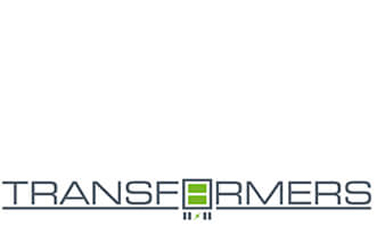
Contact
- Thorsten Koch
- Phone: +49 6151 705-391
- thorsten.koch@lbf.fraunhofer.de
- Dominik Laveuve
- Phone: +49 6151 705-492
- dominik.laveuve@lbf.fraunhofer.de
